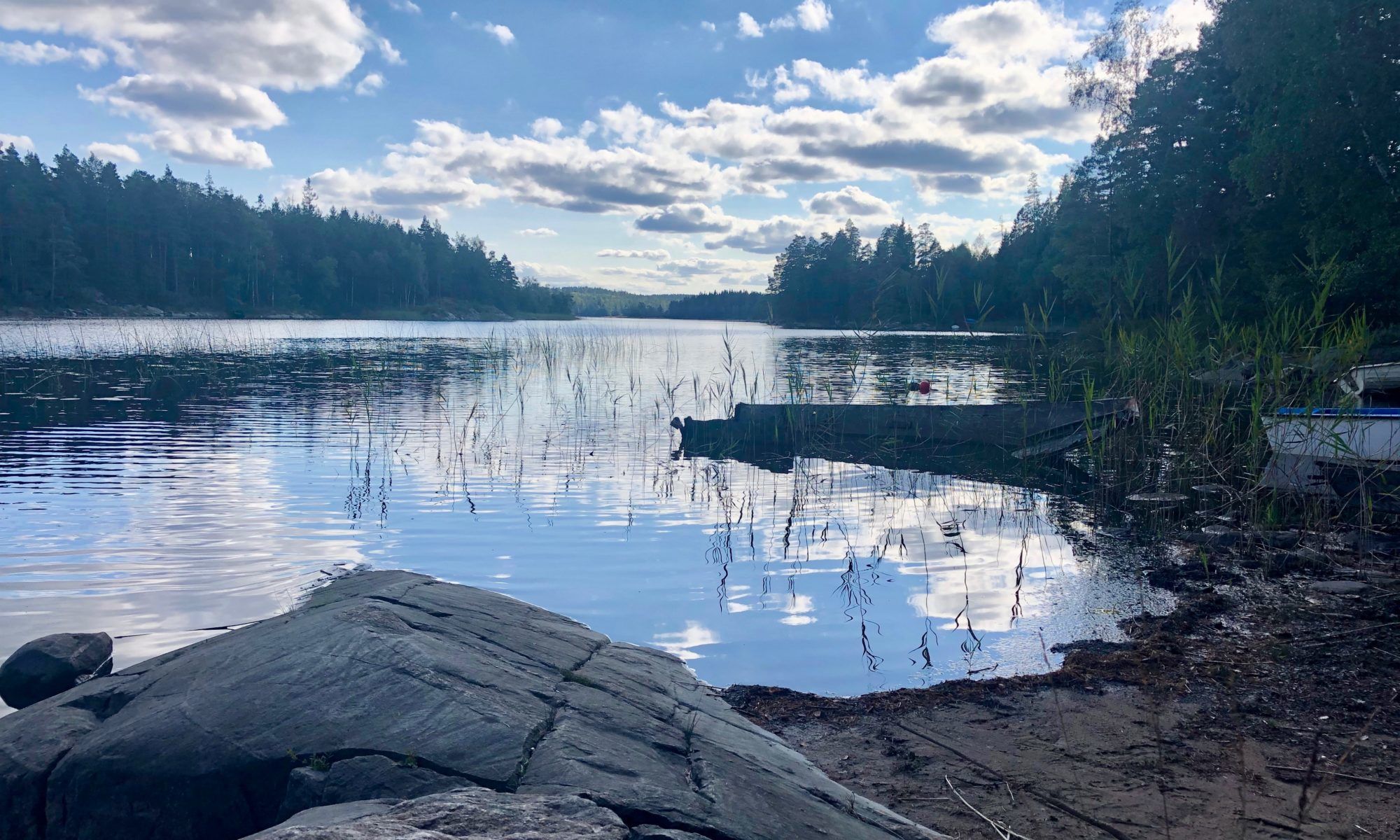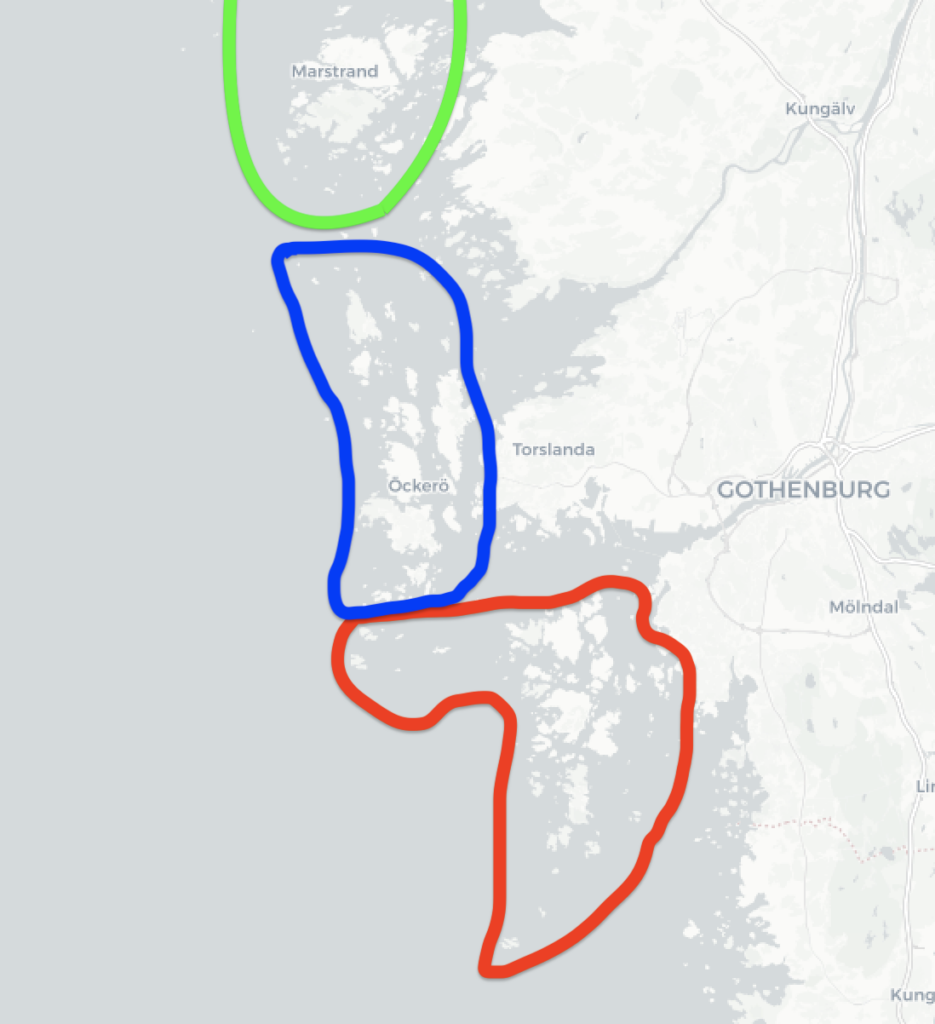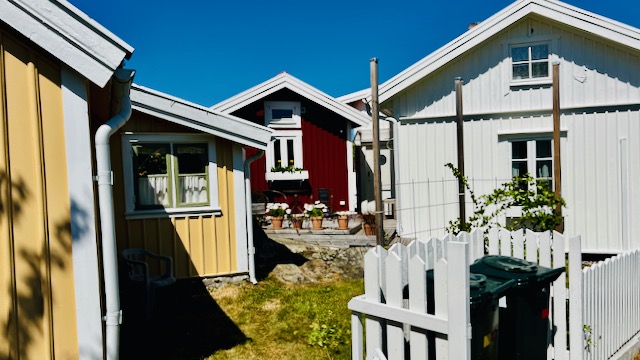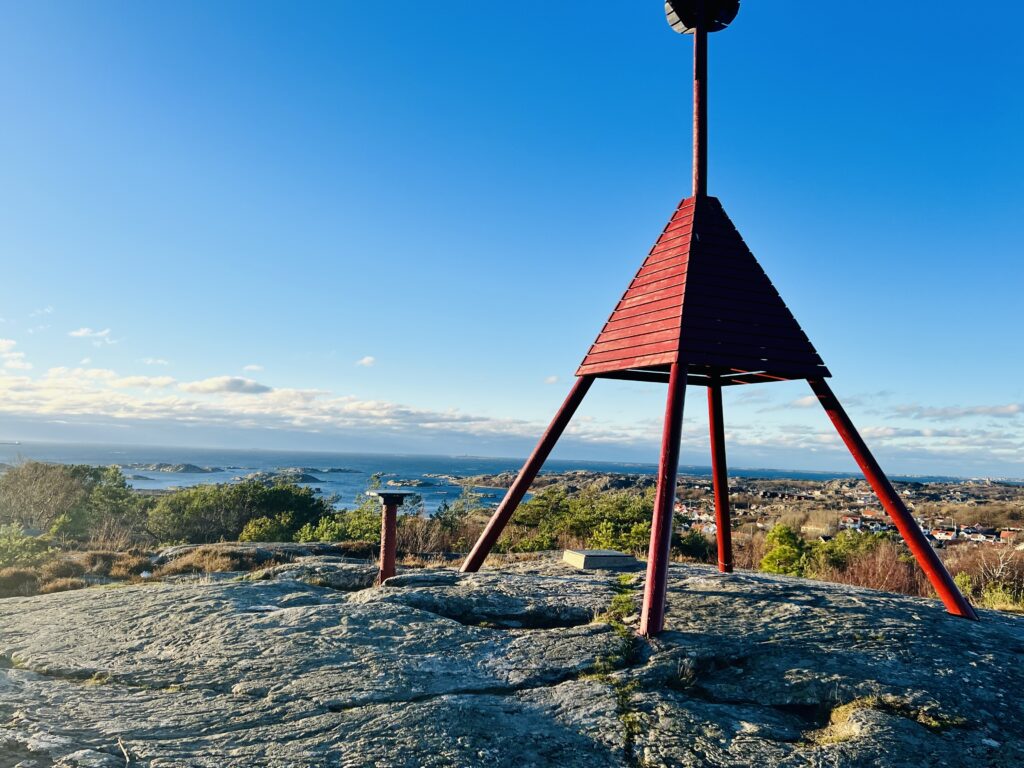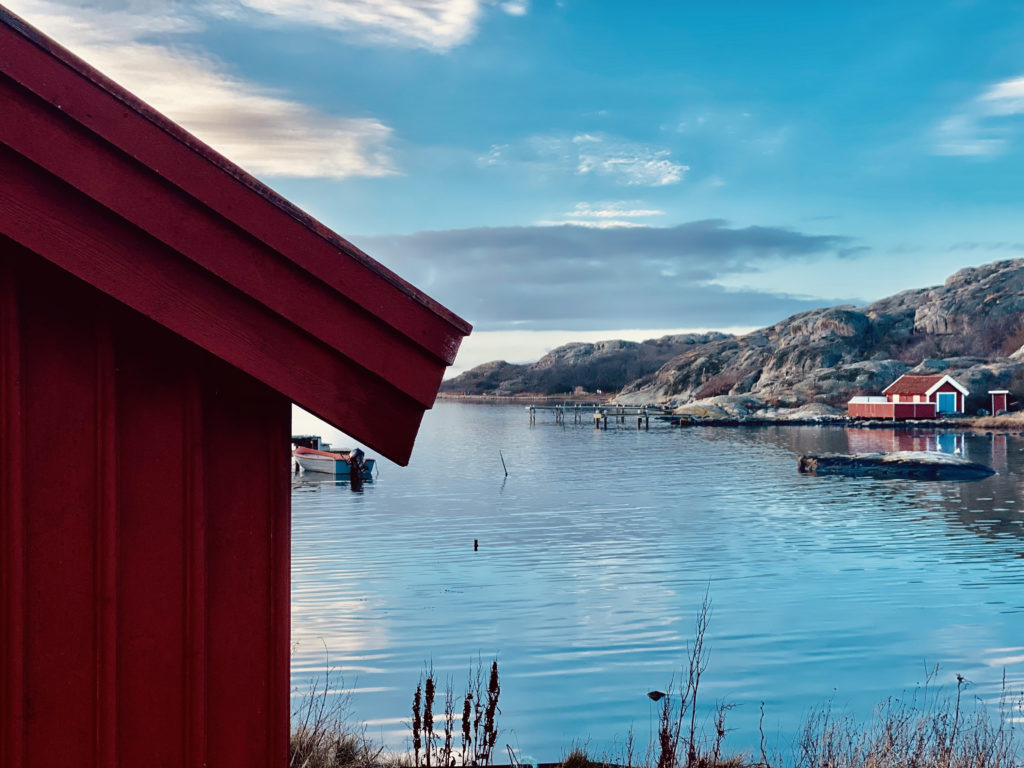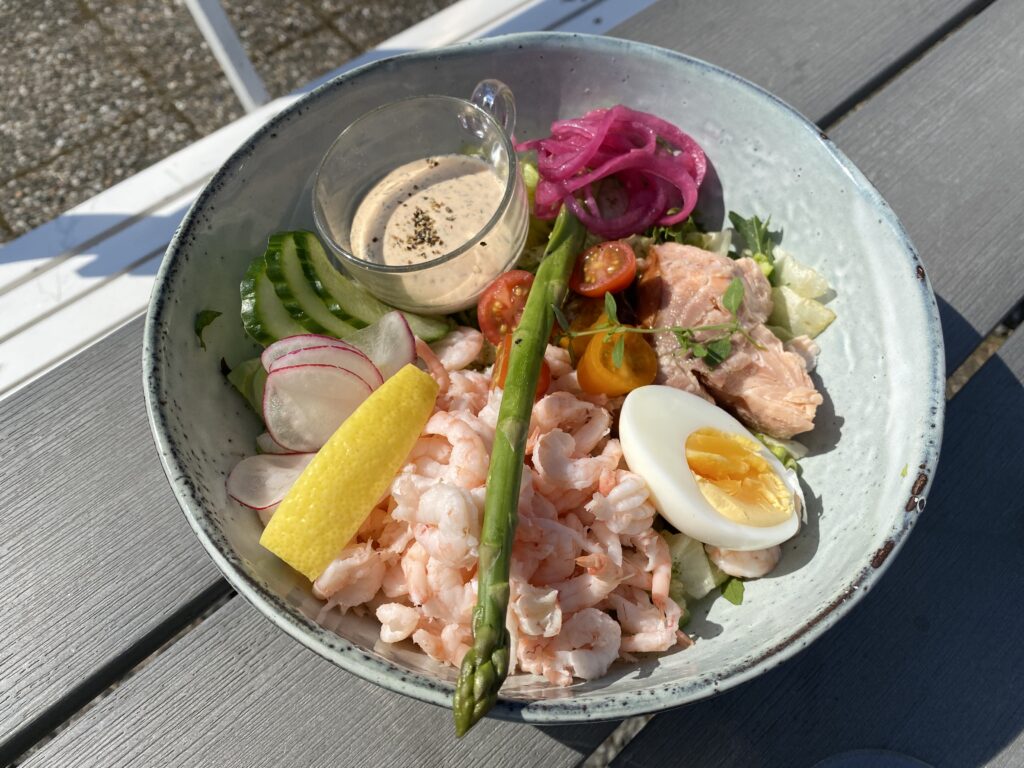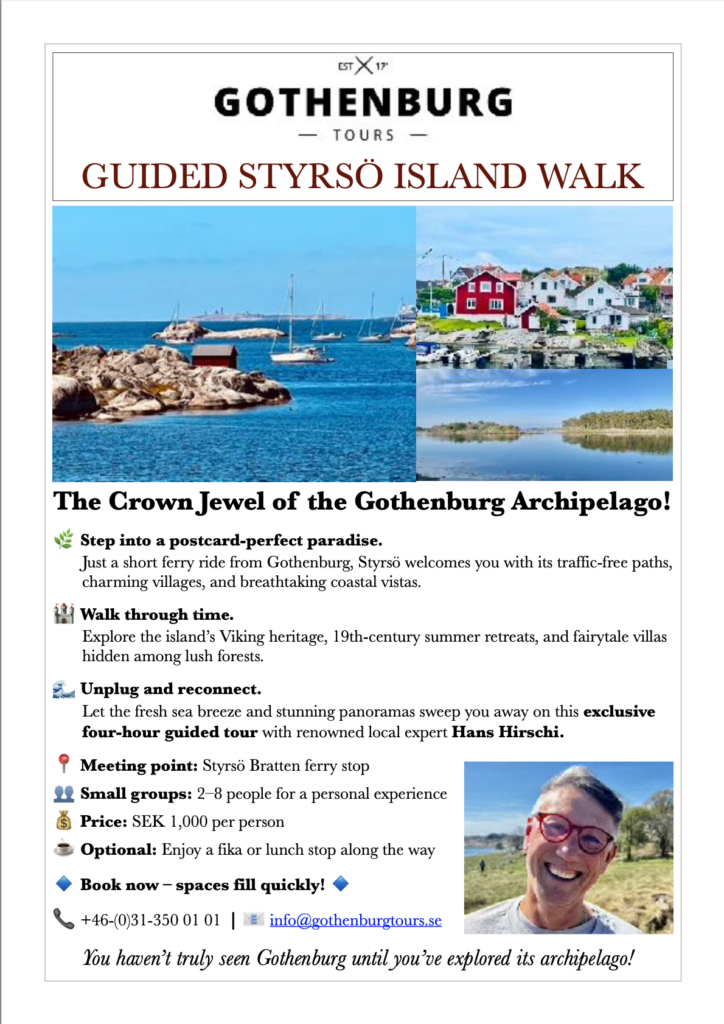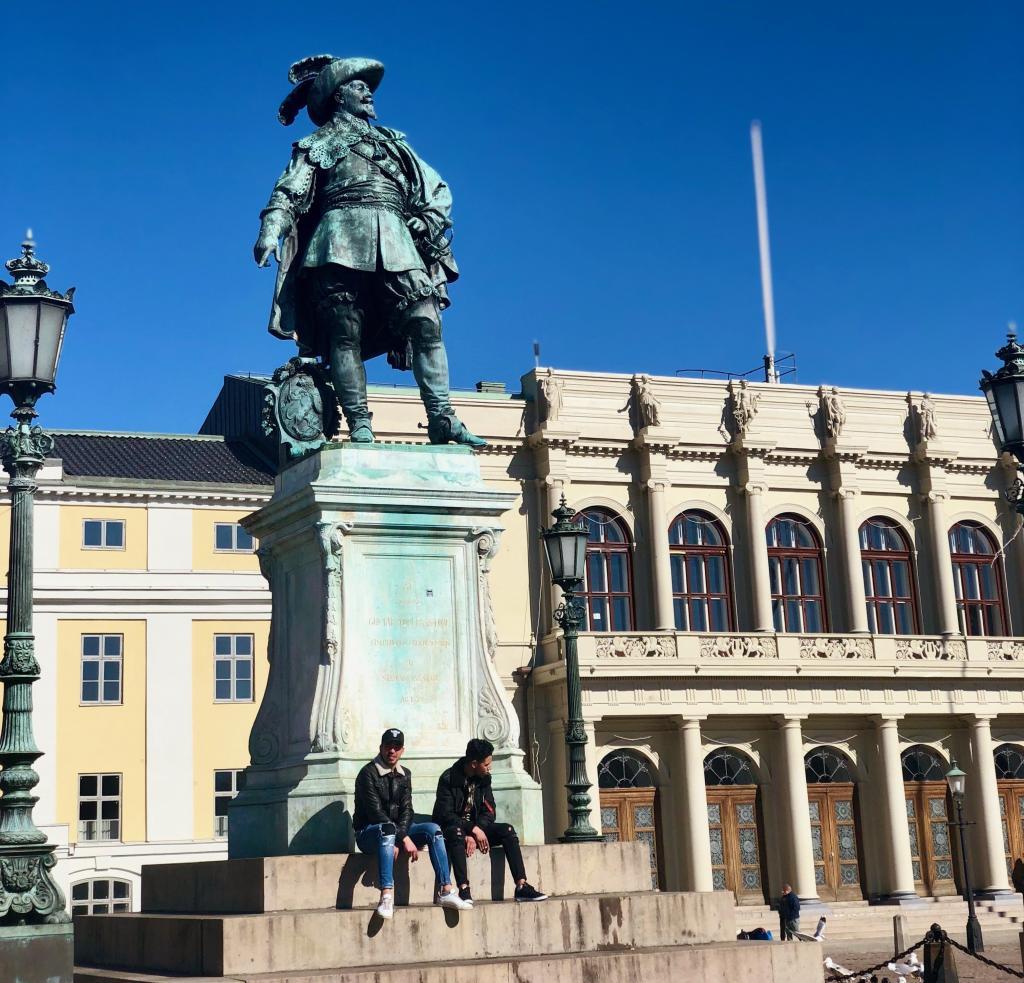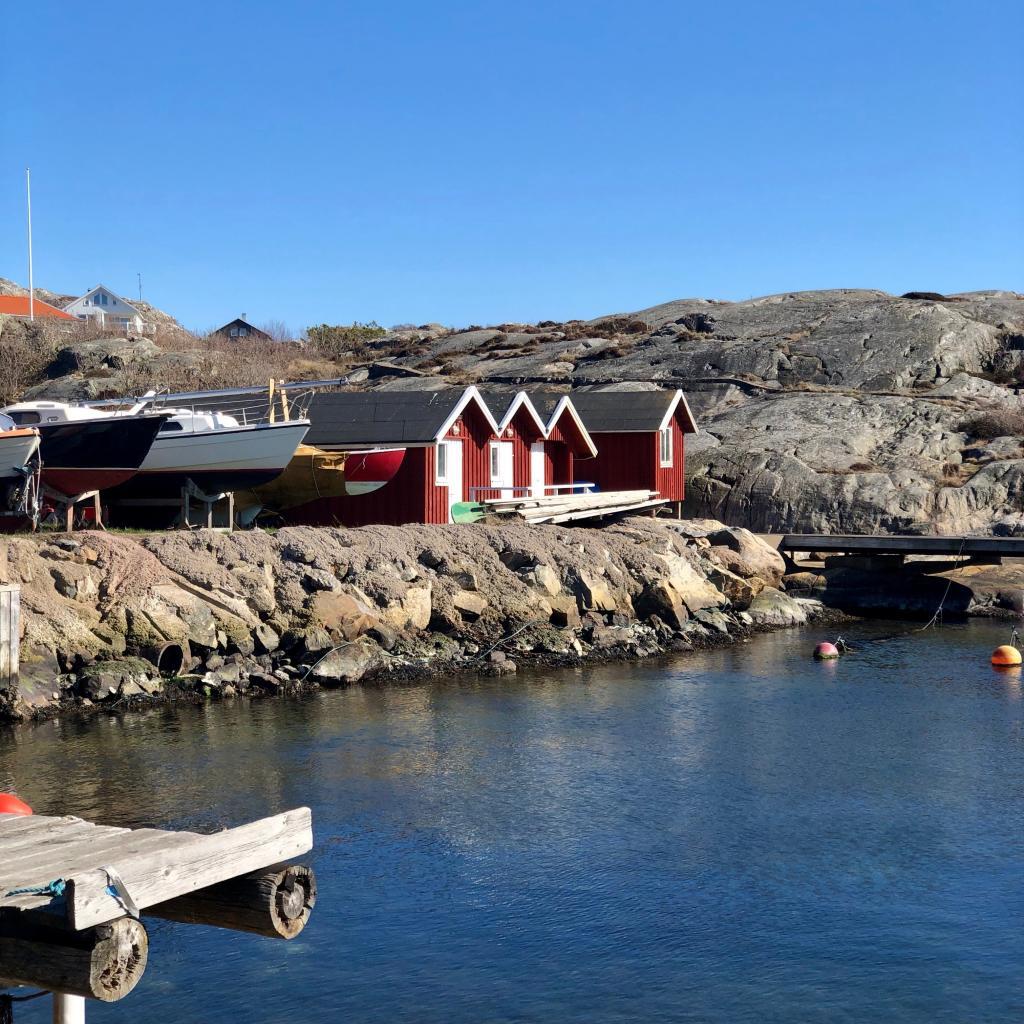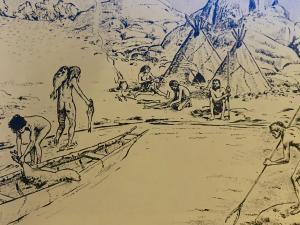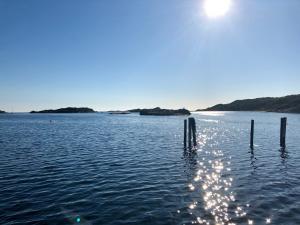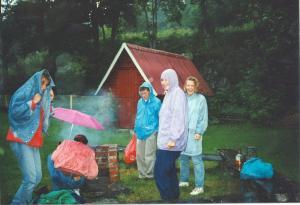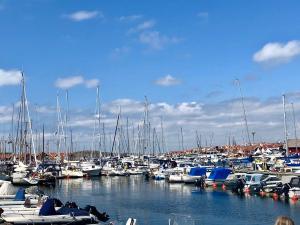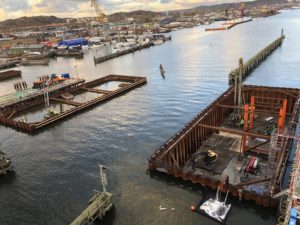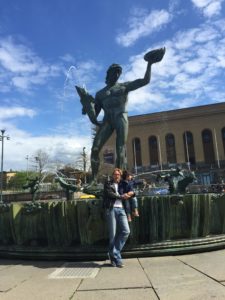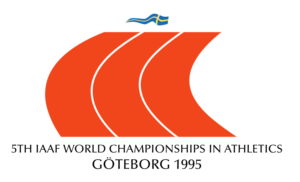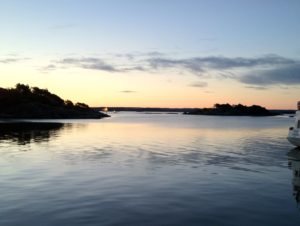8 out of 10 inquiries to Gothenburg’s tourist bureau relate to the Gothenburg Archipelago. Our website statistics confirm this. The islands off the coast of Gothenburg attract many visitors. They boast 13,000 years of rich history. Let’s clarify some details first before we show you the best ways to visit the pearl band of islands off Sweden’s West Coast:
The green line to the north depicts (part of) the islands of the Bohuslän Archipelago. This archipelago stretches to the border of Norway. Geographically, the “blue islands” also belong to the Bohuslän Archipelago.
Different Archipelagos
However, as they also lie just off the coast of the city of Gothenburg, the blue line depicts what is called Gothenburg’s Northern Archipelago. The red line marks the Southern Archipelago. The southern islands belong geographically to Västergötland. People typically refer to this area as the Gothenburg Archipelago. The “red islands” are part of the city of Gothenburg. The “blue islands” are an independent town called Öckerö.
I need to emphasize the differences between the “blue” and “red” islands. Apart from their size, the “blue islands” connect by car ferry to the mainland, making them accessible by car, bus, or taxi 24/7. The southern islands remain largely car-free, and public transport operates for about 18 hours daily, averaging one ride per hour.
How to best get to the Gothenburg Archipelago
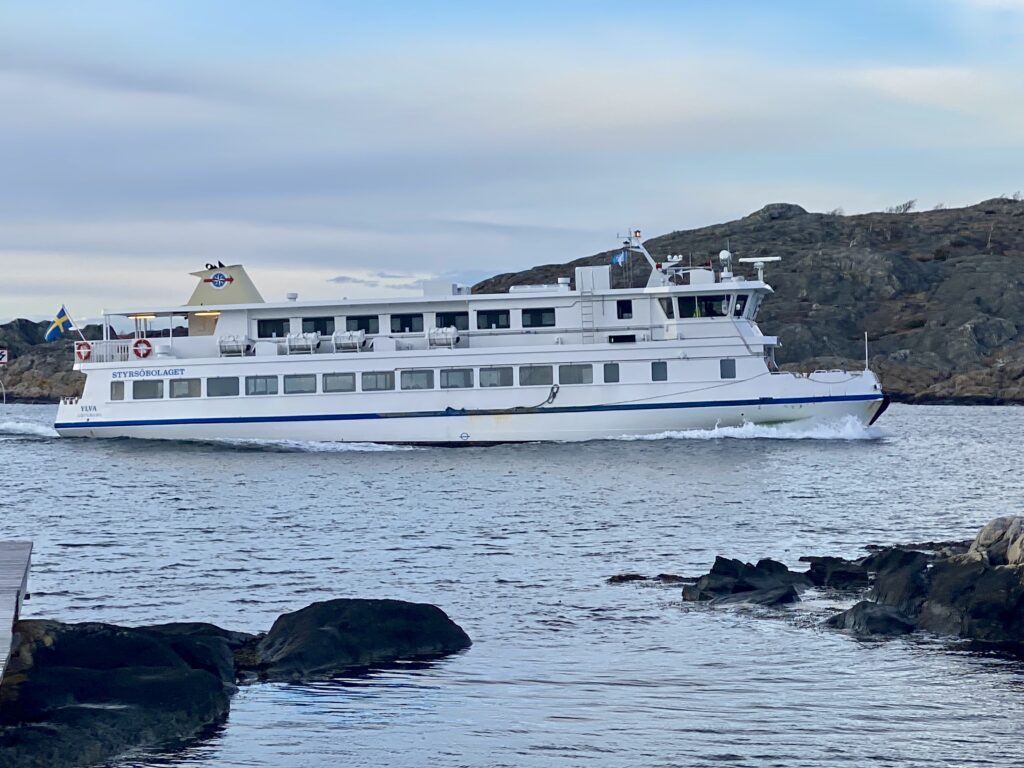
There is only one way to get to the southern islands, and that is by boat. If you’re on a budget, public transport is inexpensive. First, ride Streetcar 11 (and 9 in the summer) to Terminus Saltholmen. From there, walk the ~100 meters to the boat terminal, where currently four boat lines take you out to the islands of the Gothenburg Archipelago. The boat lines accept the same ticket as the streetcar:
For SEK 37 (tickets from Västtrafik) one way, you can reach all of the Gothenburg Archipelago from downtown. A somewhat more expensive way to get there and see the islands from the water are the many excursion ships and seafood cruises that depart downtown Gothenburg, eg. here or here. However, you will not be able to go ashore!
To truly experience the Gothenburg Archipelago, you can travel there with a private boat, which we arrange for most of our clients. We pick you up at Saltholmen (or your hotel) and take you out to one or several islands. We can show you a military island that no tourist can visit (from a distance). In addition, we can go ashore to show you the local architecture of various villages, natural sights, and ancient remnants of previous civilizations.
What to see in the Gothenburg Archipelago
Because the islands aren’t connected to the mainland road system, only a handful of cars exist out here (where I also live). Most people get around using golf carts, mopeds, bikes, or walking. Every island presents its uniqueness and establishes its own rules. On the islands, NO streets exist, only roads. Since there are no sidewalks, people are expected to walk on the left to make eye contact with oncoming traffic.
So please be mindful and always walk on the left.
Every island has villages or settlements, and each island’s history is a little different, so they all look different. Styrsö, the largest island in the Gothenburg Archipelago, has four (some even claim five) small settlements. Two-thirds of the island is uninhabited. A large forest area with species from faraway countries invites you for long walks if you’re tired of seeing people.
Beautiful nature treks, albeit not as long as on Styrsö, can also be found on Vrångö, Donsö, Asperö, and from Brännö to Galterö.
Allow us to show you the Gothenburg Archipelago
These days, visitors come to visit the Gothenburg Archipelago all year round. I have lived here for thirty years, and it breaks my heart when people walk past amazing tree species, ancient gravesites, or maybe a bronze age camp, without realizing it. They walk through our villages without understanding why they were built the way they are. They are oblivious to the fact that 13,000 years ago, this was all still underwater.
With a guide by your side, you get to fully experience the Gothenburg Archipelago. I can show you things you’d otherwise miss and tell you all the stories you want to hear. I will answer any question (well almost…) you might have. I can make sure there is a steaming cup of coffee/tea or a hot meal at the end of the day waiting for you. This is not a small feat out here off-season.
Reach out and book your visit to the Gothenburg Archipelago
We are available all year round and offer anything you may need. Whether you want a walking tour starting on the islands or prefer a pickup at your hotel, we can organize transportation and meals just the way you like. Simply reach out and ask. We provide unique experiences that no one else offers here in Gothenburg.
Welcome to truly experience the Gothenburg Archipelago.
